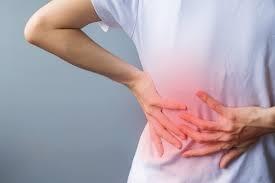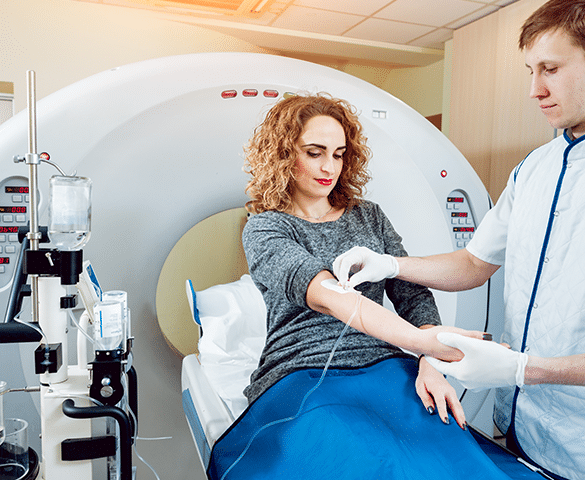Stiff muscles can make everyday activities feel like a chore. Whether your stiffness stems from physical overexertion, poor posture, stress, or a sedentary lifestyle, restoring flexibility and comfort is entirely achievable with the right approach. This comprehensive guide provides actionable steps to help you loosen tight muscles, improve mobility, and enhance your overall well-being. Let’s explore how you can regain flexibility and comfort in your daily life.
1. Understand the Causes of Muscle Stiffness
Before addressing stiff muscles, it’s important to understand what causes them. Common culprits include:
- Physical Overexertion: Intense exercise or repetitive movements can strain your muscles.
- Poor Posture: Slouching or sitting for long periods can lead to tension in your neck, shoulders, and back.
- Stress: Emotional stress often manifests as physical tension in your muscles.
- Dehydration: Lack of water can cause muscle cramps and stiffness.
- Sedentary Lifestyle: Inactivity weakens muscles and reduces flexibility.
- Aging: As you age, muscles naturally lose elasticity and become more prone to stiffness.
By identifying the root cause of your discomfort, you can tailor your approach to effectively restore flexibility and comfort.
2. Stretch Regularly to Improve Flexibility
Stretching is one of the most effective ways to restore flexibility to stiff muscles. It increases blood flow, improves range of motion, and reduces tension. Follow these steps to incorporate stretching into your routine:
- Warm Up First: Perform light aerobic activity, like walking or jogging in place, for 5-10 minutes to warm up your muscles.
- Dynamic Stretching: Before physical activity, do dynamic stretches like leg swings, arm circles, and walking lunges to prepare your muscles.
- Static Stretching: After exercise or at the end of the day, hold static stretches for 20-30 seconds. Focus on areas like your hamstrings, calves, shoulders, and lower back.
- Yoga: Practice yoga to combine stretching with mindfulness. Poses like Child’s Pose, Cat-Cow, and Forward Fold are excellent for relieving stiffness.
3. Apply Heat Therapy to Relax Tight Muscles
Heat therapy is a simple and effective way to relax stiff muscles. It increases blood flow, relaxes muscle fibers, and reduces pain. Follow these steps to use heat therapy:
- Heating Pads: Apply a heating pad to stiff areas for 15-20 minutes.
- Warm Baths: Soak in a warm bath with Epsom salts to relax your entire body.
- Warm Towels: Use a warm, damp towel as a compress for targeted relief.
Heat therapy works best for chronic stiffness or soreness. Avoid using heat on fresh injuries, as it can increase inflammation.
4. Stay Hydrated to Support Muscle Function
Dehydration can lead to muscle cramps and stiffness. Water helps transport nutrients to your muscles and removes waste products that cause discomfort. Follow these steps to stay hydrated:
- Drink Plenty of Water: Aim for at least 8-10 glasses of water daily, or more if you’re physically active.
- Include Electrolytes: Replenish lost minerals with electrolyte-rich drinks or foods like bananas, oranges, and coconut water.
- Limit Dehydrating Beverages: Reduce your intake of caffeine and alcohol, as they can dehydrate your body.
5. Engage in Regular Physical Activity
A sedentary lifestyle weakens muscles and reduces flexibility. Regular exercise keeps your muscles active, improves circulation, and prevents stiffness. Follow these steps to incorporate physical activity into your routine:
- Choose Low-Impact Exercises: Start with activities like walking, swimming, or cycling to gently work your muscles without overstraining them.
- Incorporate Strength Training: Add resistance exercises to build muscle strength and support joint health.
- Stay Consistent: Aim for at least 30 minutes of moderate exercise most days of the week.
6. Practice Good Posture
Poor posture puts unnecessary strain on your muscles, leading to stiffness and discomfort. Follow these steps to improve your posture:
- Sitting: Keep your feet flat on the floor, your back straight, and your shoulders relaxed. Use a chair with proper lumbar support.
- Standing: Distribute your weight evenly on both feet, keep your knees slightly bent, and avoid locking them.
- Ergonomics: Adjust your workspace to promote good posture. Position your computer screen at eye level and keep your keyboard within easy reach.
7. Use Self-Massage Techniques
Massage helps release muscle tension, improve circulation, and reduce stiffness. Follow these steps to perform self-massage:
- Foam Rolling: Use a foam roller to target large muscle groups like your back, legs, and glutes. Roll slowly over tight areas to release knots.
- Tennis Ball Massage: Place a tennis ball under your back, feet, or shoulders and apply gentle pressure to relieve tension.
- Hands-On Massage: Use your hands to knead and rub sore muscles. Focus on areas like your neck, shoulders, and calves.
8. Prioritize Rest and Recovery
Overworking your muscles can lead to stiffness and discomfort. Follow these steps to give your body time to recover:
- Sleep: Aim for 7-9 hours of quality sleep each night. Sleep allows your muscles to repair and regenerate.
- Rest Days: Take regular rest days from intense exercise to prevent overuse injuries.
- Relaxation Techniques: Practice deep breathing, meditation, or progressive muscle relaxation to reduce stress and tension.
9. Eat an Anti-Inflammatory Diet
Your diet plays a significant role in muscle health. Follow these steps to incorporate anti-inflammatory foods into your diet:
- Omega-3 Fatty Acids: Include fatty fish, walnuts, and flaxseeds to reduce inflammation.
- Antioxidant-Rich Foods: Add berries, leafy greens, and nuts to support muscle repair.
- Protein: Incorporate lean protein sources like chicken, tofu, and beans to aid muscle recovery.
- Hydrating Foods: Eat water-rich foods like cucumbers, watermelon, and oranges to stay hydrated.
10. Try Over-the-Counter Pain Relief
For temporary relief from muscle stiffness and discomfort, consider over-the-counter pain relievers or topical treatments. Follow these steps:
- Oral Medications: Take nonsteroidal anti-inflammatory drugs (NSAIDs) like ibuprofen to reduce pain and inflammation.
- Topical Creams: Apply creams or gels containing menthol, camphor, or capsaicin to soothe sore muscles.
- Epsom Salt Baths: Soak in a warm bath with Epsom salts to relax muscles and reduce soreness.
11. Stay Consistent with Your Routine
Consistency is key to preventing and relieving muscle stiffness. Follow these steps to stay on track:
- Set Reminders: Use alarms or apps to remind you to stretch, hydrate, or move throughout the day.
- Track Progress: Keep a journal to note improvements in your flexibility and comfort levels.
- Adjust as Needed: Listen to your body and modify your routine based on how you feel.
12. Seek Professional Help When Needed
If muscle stiffness and discomfort persist despite your efforts, consult a healthcare professional. Follow these steps to get the help you need:
- Physical Therapy: Work with a physical therapist to design a personalized exercise program.
- Chiropractic Care: Visit a chiropractor to realign your spine and relieve muscle tension.
- Massage Therapy: Schedule regular sessions with a licensed massage therapist for deep relief.
13. Stay Positive and Patient
Restoring flexibility and comfort to stiff muscles takes time and effort. Follow these steps to stay motivated:
- Celebrate Small Wins: Acknowledge improvements in your flexibility and comfort levels.
- Stay Patient: Understand that progress may be gradual but is achievable with consistency.
- Focus on the Big Picture: Keep your long-term health and well-being in mind.
By following these steps, you can effectively restore flexibility and comfort to stiff muscles, improve your mobility, and enhance your quality of life. Remember, your body is designed to move, and taking care of it will help you stay active, healthy, and pain-free. Start today and enjoy the benefits of a more flexible, comfortable, and energized you!




